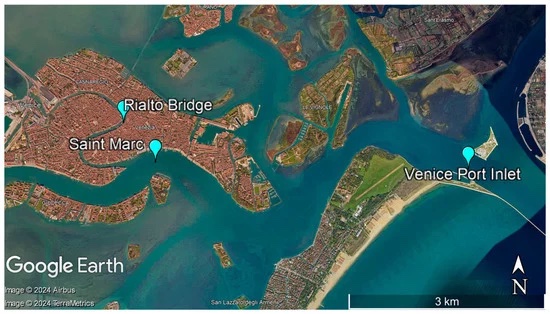One of the recent scientific papers developed in the framework of the In No Plastic project has been co-authored by VLPF.
This scientific publication unveils significant findings regarding microplastics (MPs) and nanoparticles (NPs) in the surface seawater of Venice Lagoon.
Titled “Assessing Microplastics and Nanoparticles in the Surface Seawater of Venice Lagoon—Part I: Methodology of Research” the study introduces an innovative methodology designed to efficiently detect and measure MPs and NPs in surface seawater and has been recently pubblished by the scientific journal “Material”.
The study represents a successful collaboration between Pr. Teresa Cecchi, of the Montani Technical Institute in Fermo, Dr. Davide Poletto of Venice Lagoon Plastic Free (VLPF), between whose entities there is a Memorandum of Cooperation, Dr. Elfrida Mihaela Cârstea from the National R&D Institute for Optoelectronics INOE 2000 (Romania), Dr. Andrei Constantin Berbecaru and Dr. Maria Râpă from UPB in Romania, and Dr. Davide Poletto from Venice Lagoon Plastic Free.
The research provides valuable insights into the distribution and characteristics of these pollutants and has been conducted with the water samples collected from the UNESCO site of Venice and its lagoon, more precisely in the Venice-Lido Port Inlet, Grand Canal under Rialto Bridge, and Saint Marc basin.
Using optical microscopy and SEM-EDX, the researchers conducted thorough analyses of MPs, focusing on their relative abundance and characteristics such as color, shape, and size classes. Concurrently, NPs’ concentration and mean were estimated through rigorous sample processing and Nanoparticle Tracking Analysis techniques.
The study’s methodology, includes bulk seawater sampling, a preanalytical cascade filtration, and a protocol for minimizing interference from non-plastic microparticles and nanoparticles, via a “green” oxidant. It enabled the detection of MPs of varying sizes and NPs, similar to those ingested by marine invertebrates and fishes.
These findings offer an important insight into the extent and characteristics of MPs and NP pollution in Venice Lagoon, emphasizing the urgent need for coordinated efforts to mitigate their environmental risks.
Moreover, this research contributes to the understanding and management of marine plastic pollution and underscores the importance of adopting innovative approaches to prevent the dispersal and removal of plastics from the environment.
